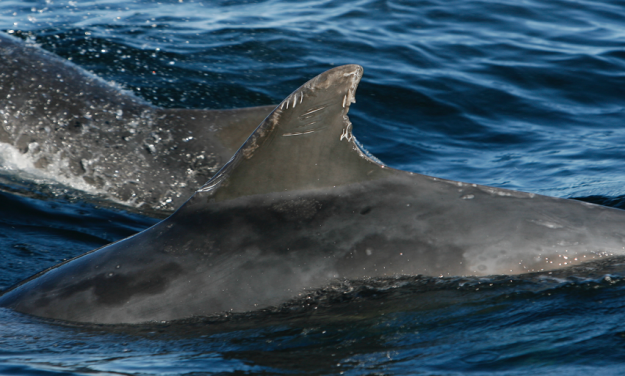This work formed my Honours thesis at the University of Aberdeen in 2007-08. It focused on aggression among bottlenose dolphins (Tursiops truncatus) in Scotland. The full paper is available here.
What did I do?
Scars and natural markings have long been used to identify individual dolphins, with researchers using photographs to keep records of individuals over time. These scars are typically the result of aggressive interactions between dolphins, but such behaviour is rarely observed in the wild. I investigated scarring visible in photographic records to investigate body scarring in dolphins to collect information on aggressive interactions and social ecology. I developed four methods to measure the occurrence and extent of scarring levels. These were then applied to compare rates of scarring between the sexes and between populations.

Note the white, parallel scars from aggressive interactions with other dolphins. Photo courtesy of the University of Aberdeen Lighthouse Field Station
What did I find?
I found that male dolphins on the East Coast of Scotland were significantly more scarred than females. Differences also existed between the three populations, with dolphins from the Sound of Barra showing significantly lower levels of scarring than animals from the East Coast or the Hebrides.
What does it mean?
This means that photographs could potentially indicate the sex of a dolphin based on its level of scarring. These results also suggest that, despite the fact that the three populations considered are of the same species and within the same country, there may be social differences between these populations. This could be related to differences in social structure, the use of different behaviours, age or sex rations, habitat use, or resource availability. Regardless, aggressive events are difficult to observe in wild dolphins and examination of body scarring appears to be a good indicator of such behaviour.
